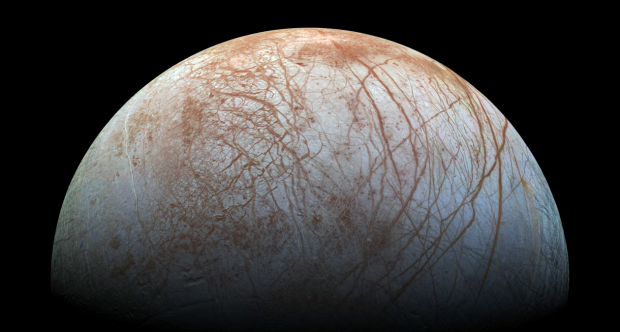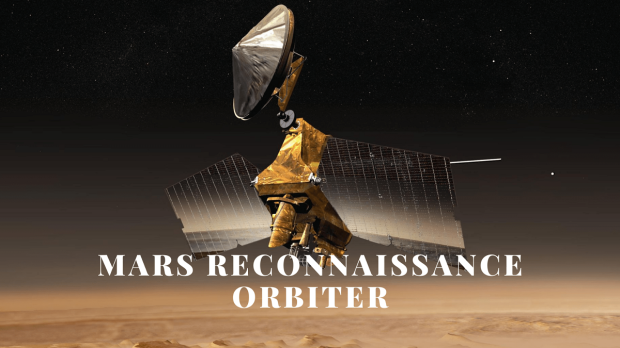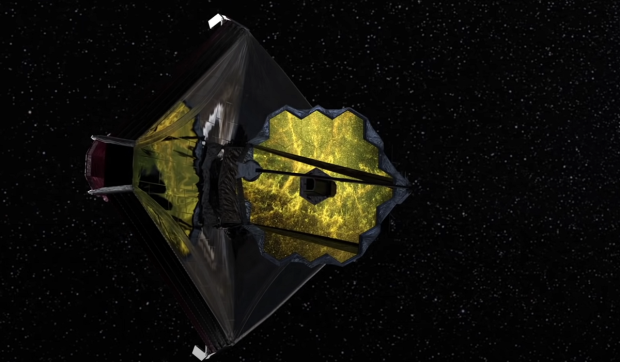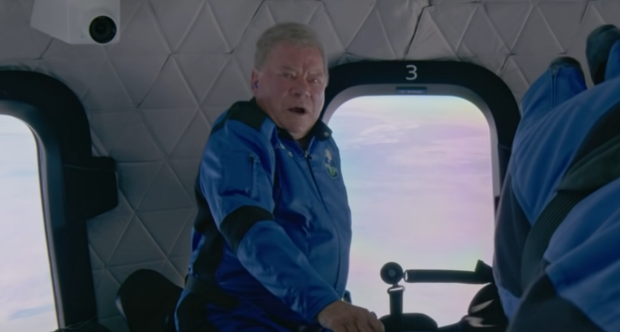Science, Space, Health & Robotics News - Page 261
NASA releases Hubble image of monster cosmic 'Pac-Man' supernova
NASA has released a new incredible image of a supernova remnant that looks an awful lot like a cosmic Pac-Man munching its way across the galaxy.
The supernova remnant is called N 63 A, and its located in the Large Magellanic Cloud galaxy. While the image certainly does look like the iconic video game character Pac-Man, it's actually the remains of a violent supernova explosion that happened when a star's life came to a tragic end. The remains of the star are located some 163,000 light-years away from the Milky Way galaxy and inside what is referred to as a stellar nursery (a region in space that contains large amounts of gases that condense into baby stars).
NASA explains that when N 63 A went supernova, it appears to have stalled star formation for other stars in its region, which is the opposite of what usually happens when a supernova occurs. However, NASA says that N 63 A is relatively young, and once it begins to settle, it will likely start to trigger its own star-forming region in space. For more information on this story, check out this link here.
Continue reading: NASA releases Hubble image of monster cosmic 'Pac-Man' supernova (full post)
NASA finds signs of persistent water vapor on an alien planet
NASA researchers have detected the presence of persistent water vapor on one of Jupiter's icy moons using the Hubble Space Telescope.
Jupiter has many moons, and NASA is planning on exploring them as they could hold secrets about the evolution of Jupiter and Jupiter-like exoplanets that may be found in other parts of the Milky Way. According to a new post by NASA, Hubble's observations from 1999 to 2015 have led researchers to believe that one of Jupiter's moons, Europa, is showing signs of water vapor being present in the moon's atmosphere, which is only one-billionth the surface pressure of Earth's atmosphere.
Europa is scared by cracks and fissures and averages -275 degrees Fahrenheit, but researchers believe that life could be present in a vast ocean beneath its icy crust. Hubble previously observed 60 mile-high plumes of water vapor being shot into the atmosphere, which is very similar to a geyser on Earth. These results suggest a "long-term presence of a water vapor atmosphere only in Europa's trailing hemisphere," writes NASA. The results from these observations will assist NASA in its upcoming mission to Europa called the Europa Clipper mission.
Continue reading: NASA finds signs of persistent water vapor on an alien planet (full post)
Biggest comet ever discovered is approaching Earth, arrival date found
Earlier this year astronomers detected what could be the largest comet ever discovered, and it's the first comet on an incoming path with our solar system.
The comet is named Bernardinelli-Bernstein after the astronomers that detected it, Pedro Bernardinelli and Gary Bernstein, from the University of Pennsylvania. The comet was originally thought to be a dwarf planet due to its immense diameter of 62 - 124 miles, but after further analysis researchers found that it wasn't a dwarf planet, but a large comet travelling from the Oort Cloud.
The researchers performed heavy analysis on the newly discovered comet with data sets from multiple observations. What the researchers found was the comet made its previous closest approach to the Sun around 3.5 million years ago, coming in at a distance of 18 AU (1 AU = the distance between Earth and the Sun - 93 million miles.) Additionally, the researchers were able to predict when the comet will make its closest approach to Earth, and according to the results, Comet Bernardinelli-Bernstein will approach the Sun in 2031.
Continue reading: Biggest comet ever discovered is approaching Earth, arrival date found (full post)
NASA researchers predict when humans will colonize multiple planets
NASA is working towards getting humans on multiple planets in an effort to protect the species from extinction and expand our knowledge. But when will this happen?
According to a team of NASA scientists who published a paper on the pre-print server arXiv, humanity entered a "window of peril" when the first nuclear weapons were developed and deployed close to the end of World War II. The paper states that this "window of peril" will not be closed "until robust off-world colonies become a reality." The paper explores the timeline of when humans will be able to get off Earth and spread out amongst the stars.
The team of researchers concentrated their efforts on predicting the future of advanced computing power, which would be a major factor in allowing humans to reach far into space and colonize other planets. According to the results of the paper, NASA researchers estimate that humans could land the first humans on Mars by 2038. Additionally, the researchers predict that humans could reach the Asteroid Belt sometime around the year 2064. Lastly, humans could venture to the nearest neighboring star, Proxima Centauri, by 2254.
Continue reading: NASA researchers predict when humans will colonize multiple planets (full post)
Meteorite crashes through woman's roof nearly killing her, 'explosion'
A close call is an understatement to 66-year-old Golden, British Columbia resident Ruth Hamilton, who experienced a terrifying ordeal on October 4 that nearly killed her.
Hamilton was asleep in her bed for hours when she was awoken by her dog barking, which was followed by a loud "explosion" sound. Following the loud "explosion" sound, Hamilton jumped out of bed and ran over to turn the light on. Only moments later, a large chunk of rock smashed through her ceiling. Hamilton flipped back her pillow and found a decent size rock laying in between her pillows, only inches away from where her head once was a few seconds ago.
The rock was initially thought to be from a construction site nearby that conducts blasting. However, it was quickly confirmed from multiple sources that a meteorite was seen exploding that same night. The meteorite weighed in at about two pounds, and according to Hamilton, she plans on keeping it after Western astronomy professor Peter Brown and his team finish analyzing it.
Continue reading: Meteorite crashes through woman's roof nearly killing her, 'explosion' (full post)
Most detailed look yet at some of the solar system's biggest asteroids
Astronomers have pointed a telescope at the asteroid belt between Mars and Jupiter and have detailed many of the largest asteroids in the solar system.
An international team of astronomers used the European Southern Observatory's Very Large Telescope to observe some of the solar system's largest objects that are located in the asteroid belt between Mars and Jupiter. The team of astronomers detailed forty-two of the solar system's biggest rocks, with three of the main belt asteroids being images with a high level of detail. The remaining space rocks were captured in sharp images.
Pierre Vernazza, from the Laboratoire d'Astrophysique de Marseille in France and led on the study that has been published in Astronomy & Astrophysics, said, "Only three large main belt asteroids, Ceres, Vesta and Lutetia, have been imaged with a high level of detail so far, as they were visited by the space missions Dawn and Rosetta of NASA and the European Space Agency, respectively. Our ESO observations have provided sharp images for many more targets, 42 in total."
Continue reading: Most detailed look yet at some of the solar system's biggest asteroids (full post)
Volcanic eruption imaged from space in true color, rivers of lava
A satellite flying overhead of an erupting volcano has captured stunning images of the rivers of lava spewing from the volcano's crater.
Credit: European Union, Copernicus Sentinel-X imagery
The volcano that is erupting is on the Spain's La Palma island which first began erupting on September 19. Since then, rivers of lava have been spewing out of the volcano causing residents in the local area to evacuate. The eruption has marked the first time in 50 years this volcano has erupted, and over the weekend reports surfaced of 3.8 earthquakes in the area - indicating that the volcanic eruption is far from over.
Continue reading: Volcanic eruption imaged from space in true color, rivers of lava (full post)
Mars isn't just red, and these new images prove its 'glowing' beauty
Mars is known for its barren wastelands and fine red sand, but that isn't all the planet has to offer, and new images released by a Mars orbiter proves that.
While known as the Red Planet, Mars offers more beauty than one might expect, and recently released images from the Mars Reconnaissance Orbiter showcase a multitude of colors that can be found throughout the surface. The Mars Reconnaissance Orbiter used the incredible HiRISE camera that it's equipped with to capture high-resolution images of the diverse nature of Mars' surface.
The HiRISE camera took images of the Kaiser Crater, which has a large number of giant dunes inside of it that have a variety of subsurface minerals that have eroded down the sides of the dunes. According to the team behind the images, "Some of these gullies produce a variety of colors that are highlighted on the west-facing (illuminated) slopes, where the gullies appear to be glowing in the winter light." The images found in this article are just some of what was taken. To view the full selection of images, check out this link here.
Continue reading: Mars isn't just red, and these new images prove its 'glowing' beauty (full post)
NASA's next-gen revolutionary space telescope inches closer to launch
After multiple years of development and numerous setbacks, NASA's next-generation space telescope is inching closer to its launch date.
NASA's next-generation telescope is the James Webb Space Telescope (JWST) that was originally proposed back in 1996 with a launch date of 2007. However, due to countless delays due to issues being found throughout testing the telescope, the launch had to be pushed back. Additionally, the JWST has cost NASA much more than what they originally intended to spend. In the US space agency's original proposal, JWST was going to cost $1 billion, but do delays and development costs that come with them, that number slowly rose to $9.7 billion.
Now, JWST has safely arrived at the last destination it will be on Earth, French Guiana, South America, which is the site of the space telescopes launch. Currently, JWST is undergoing final testing before its launch aboard the European Space Agency's (ESA) heavy-lift space launch vehicle developed by Arianespace called the Ariane 5 rocket. NASA and the ESA have selected the target launch date for December 18th, 2021 - 14 years after the originally proposed launch date.
Continue reading: NASA's next-gen revolutionary space telescope inches closer to launch (full post)
William Shatner moved by his wild space experience, brought to tears
William Shatner, along with the three other crew members, have safely made it back to the surface of Earth with Jeff Bezos' Blue Origin.
William Shatner, who played the iconic role of Captain Kirk in Star Trek, was joined by three other private citizens, Dr. Chris Boshuizen, Glen de Vries, and Audrey Powers, on Blue Origin's second successful human spaceflight aboard its New Shepard rocket. After stepping foot back on Earth, Shatner was completely lost for words as he attempted to describe his experience.
Captain Kirk tried to explain that what he experienced and said he was completely moved by it as it made him realize the fragility of Earth. It seems that what Shatner experienced was the Overview Effect that so many astronauts describe, which is a cognitive shift in awareness that happens when viewing Earth from outside of the atmosphere. To listen to what Shatner had to say, check out the above video and skip to 2:47:23.
Continue reading: William Shatner moved by his wild space experience, brought to tears (full post)











